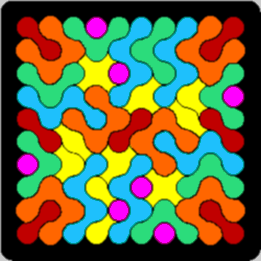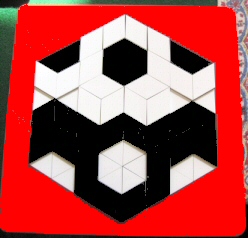
Making
Sense
Kate Jones,
guest
speaker
Making Sense
A theory of consciousness
by Kate Jones
![]()
"Making Sense" is an epistemological function. What do we know, and how do we know it? How do we separate sense from nonsense? How do we validate our conclusions? How do we know what's real and true? How do we recognize contradictions? How do we recognize when we have suspended disbelief and critical judgment? How do we debunk our own assumptions? How do we gauge the reliability of our first-hand observations versus second-hand received information? Why is it so difficult to let go of long-cherished misapprehensions and errors? How can we recognize subtle or blatant attempts to mislead us? How to be skeptical without becoming paranoid?
 Our brains seek and see patterns. That's why we can understand similes, metaphors, parables, allegories, poetry, analogies, comparisons. That's how we extrapolate from similarities and differences, contrive explanations and conclusions. Our minds form patterns and systems, connections and cross-references. Every experience, from birth onward, deposits new data into the search engine of the mind, and every incoming piece of data is checked against what's on file to see how to treat it.
Our brains seek and see patterns. That's why we can understand similes, metaphors, parables, allegories, poetry, analogies, comparisons. That's how we extrapolate from similarities and differences, contrive explanations and conclusions. Our minds form patterns and systems, connections and cross-references. Every experience, from birth onward, deposits new data into the search engine of the mind, and every incoming piece of data is checked against what's on file to see how to treat it.
Our minds are convinced of their own rightness. No one wants to be proven wrong. Self-image and ego ride on it. Some degree of maturity and wisdom is required for an individual to be more glad to be shown to have been in error, so as to be able to correct it, than to be thought to be right.
 All relationships happen at the intersection of each mind's repertoire of belief and knowledge, of testing oneself against the opinions of others. Each individual's set of beliefs is the accumulation of information and impressions of a lifetime, and it has become well established as a system, a library, an encyclopedia of that person's life.
All relationships happen at the intersection of each mind's repertoire of belief and knowledge, of testing oneself against the opinions of others. Each individual's set of beliefs is the accumulation of information and impressions of a lifetime, and it has become well established as a system, a library, an encyclopedia of that person's life.
Each component part is likewise a mini-system, and having been installed, it will cling to its continued existence with the same ferocity as any other living thing. It will embrace and reinforce any other ideas that support its own position or reinforce its own belief in its own rightness. It will reject any contradictory or unaligned ideas and fortify its defenses, underpinned by the individual's entire emotional apparatus.
So the first step to making sense of our own sense-making machinery is to understand its structure and survival algorithm, and to choose consciously to question, verify, prove, confirm dispassionately every idea, notion, belief, prejudice, value, preference, and conviction. With a scientist's scrupulous honesty and a surgeon's precision, one needs to check every alleged fact at the gate, like a computer's virus detector, before allowing a notion into one's consciousness. Since ideas are held deep in the subconscious reference system, they need to be called to the conscious level to examine.
With the awareness that all conversations, all conflicts, all collisions between minds are merely the dissonance of their respective data sets—a war of ideas—we can then approach such disagreements from a more elevated viewpoint. Instead of each side arguing that the other side is wrong, misguided, or even evil, it is more advantageous to say something along the lines of, "That's interesting that we don't see that point the same way. How do you see it, and how did you come to see it that way? On what do you base your conviction?"

With the recognition that there is only one reality, and therefore only one truth, however fractured, fragmented and fractalized it may look to different observers, we can then start to approach a matter from different sides and meet in the middle. If we take it as a value that it is more important to actually be right than to be believed to be right or to appear right, most disagreements simply melt away.
Those same active idea packets that fight so hard for their survival, and that so ingeniously come up with rationalizations for their own rightness and for the wrongness of the other person, can be highly beneficial and productive in the fields of creativity, invention, and problem-solving. By combining and recombining parts of themselves into new configurations, with the subconscious or, better, the supraconscious as the crucible of inspiration, the mind is the most powerful agent in the universe. Left to operate on its own, without volitional guidance, it is merely a machine that equally serves right and error. Turning on Reason, the thought-check of the brain, requires an act of will. That is the mechanism through which everything will then make sense.
©2011 Kadon Enterprises, Inc. All rights reserved.